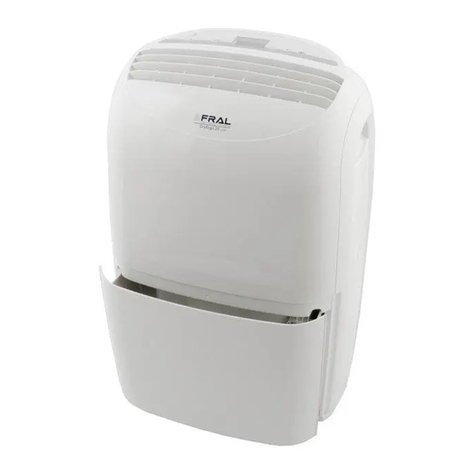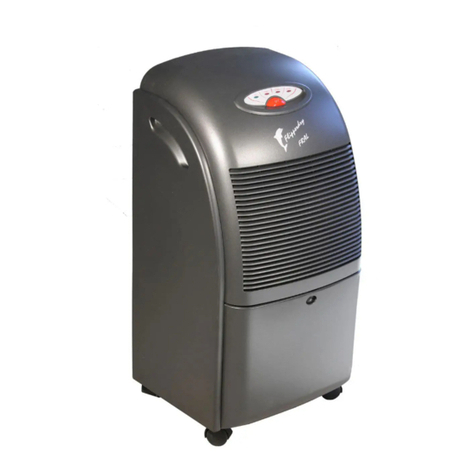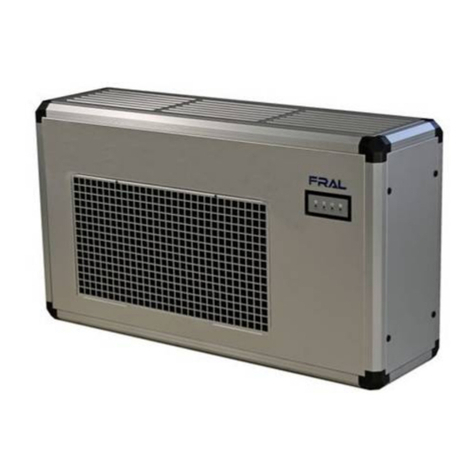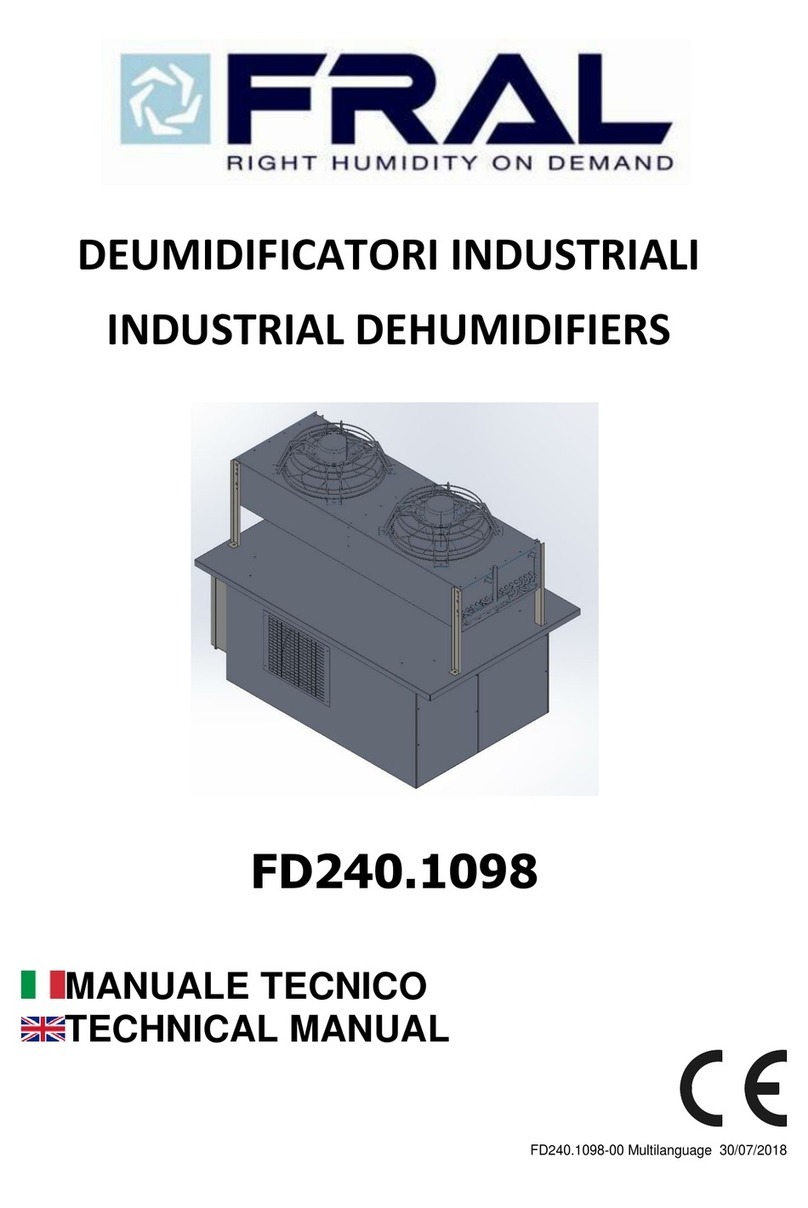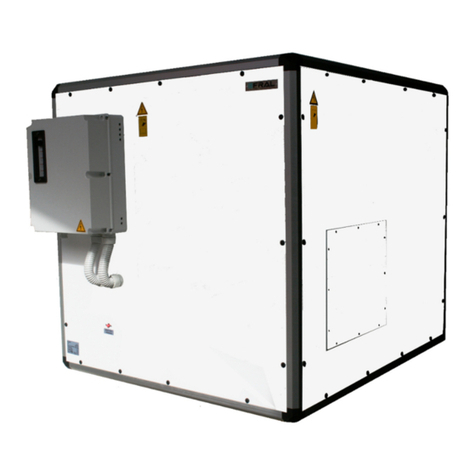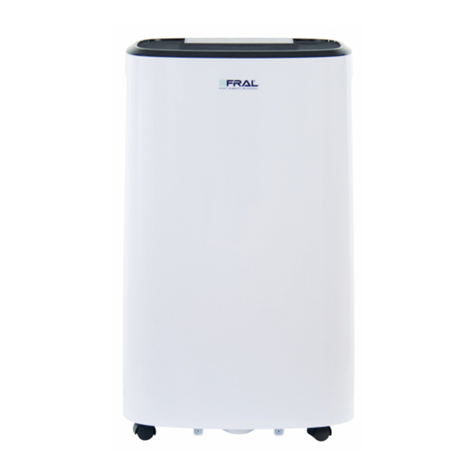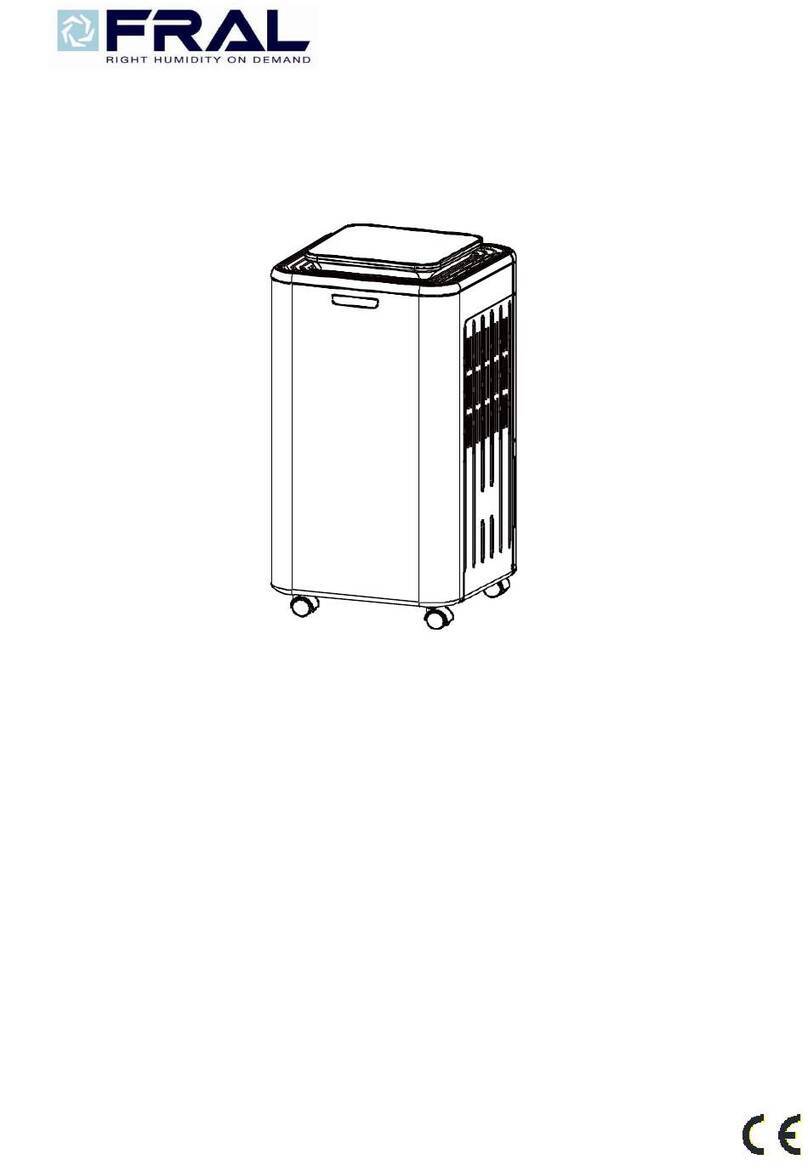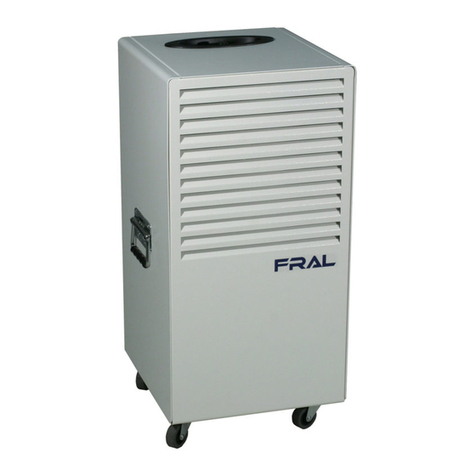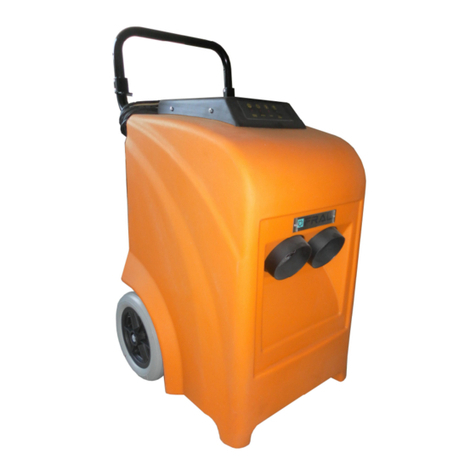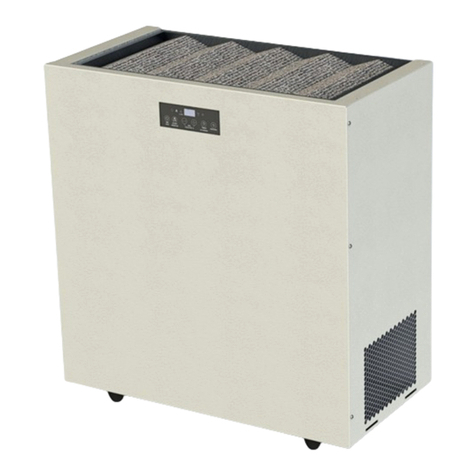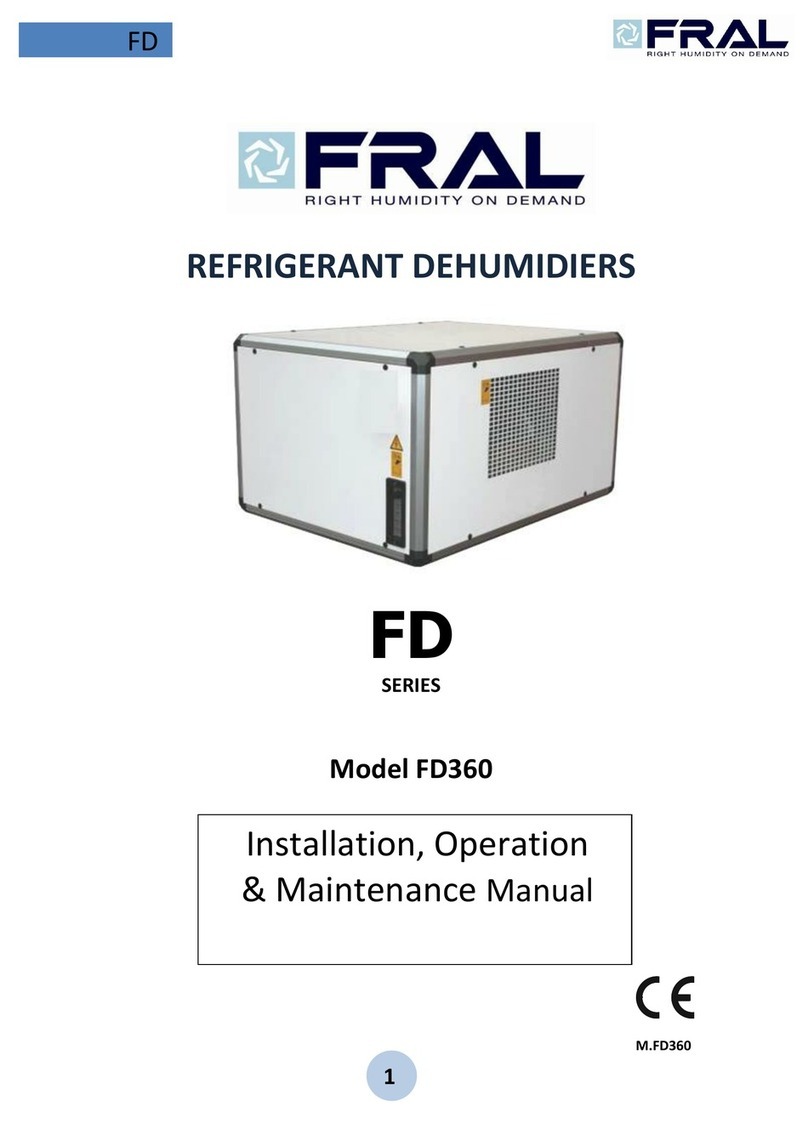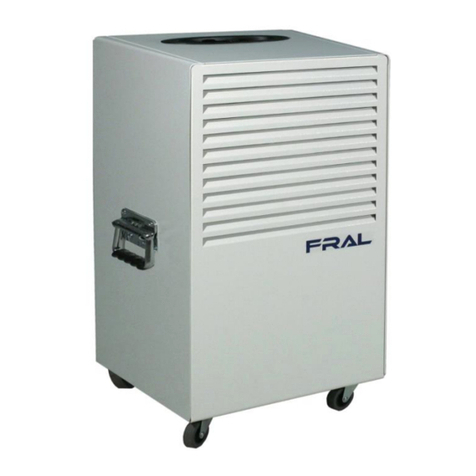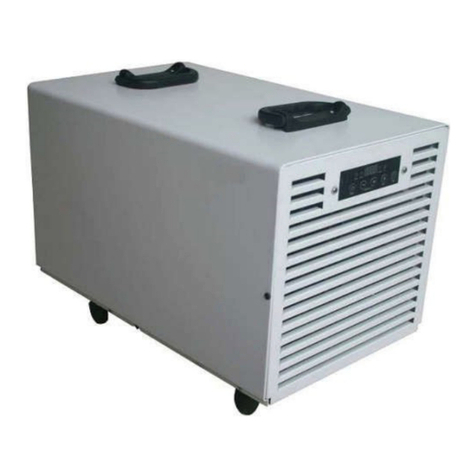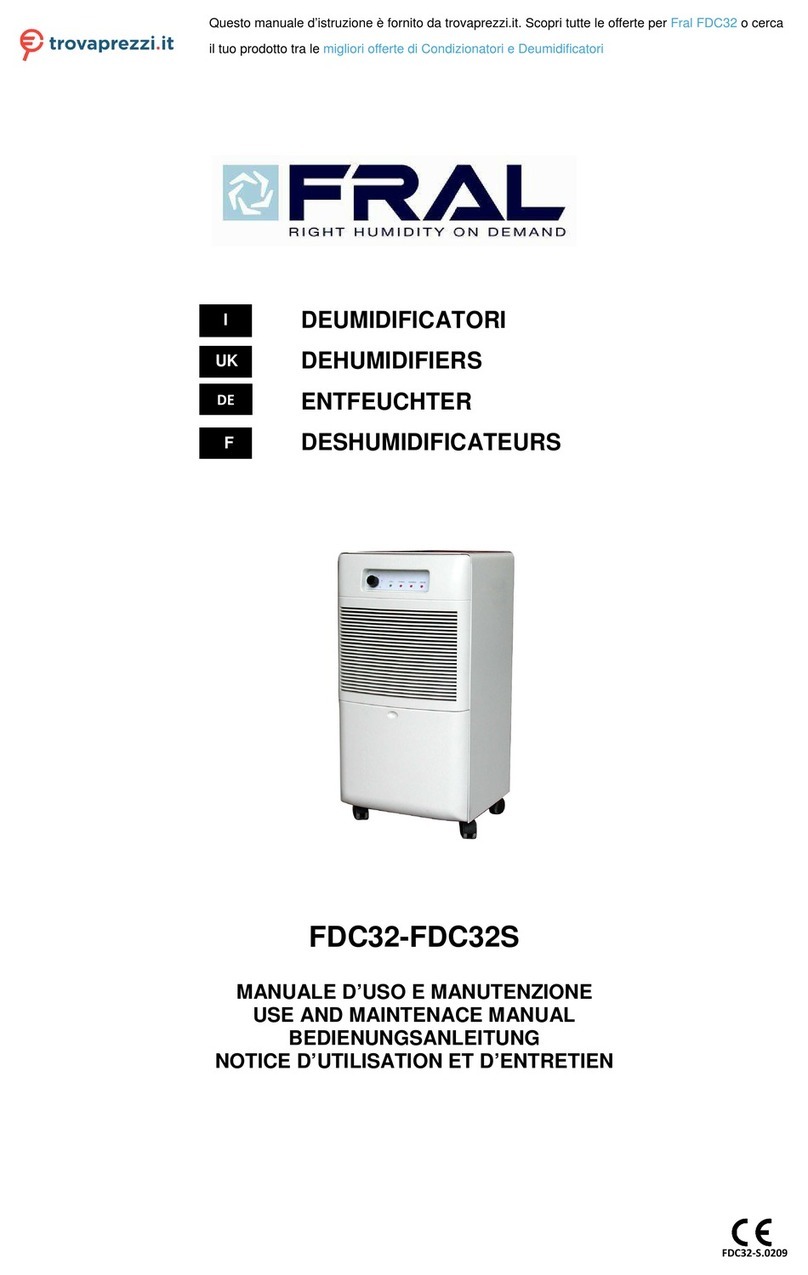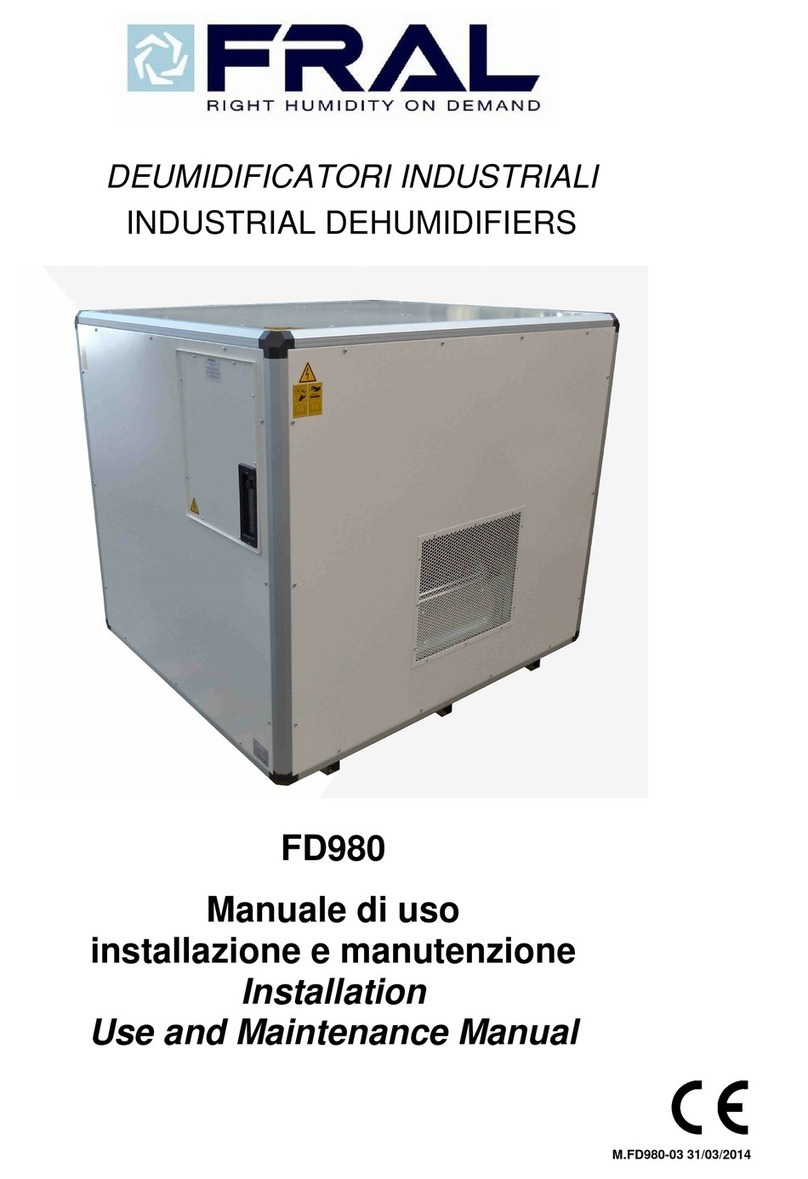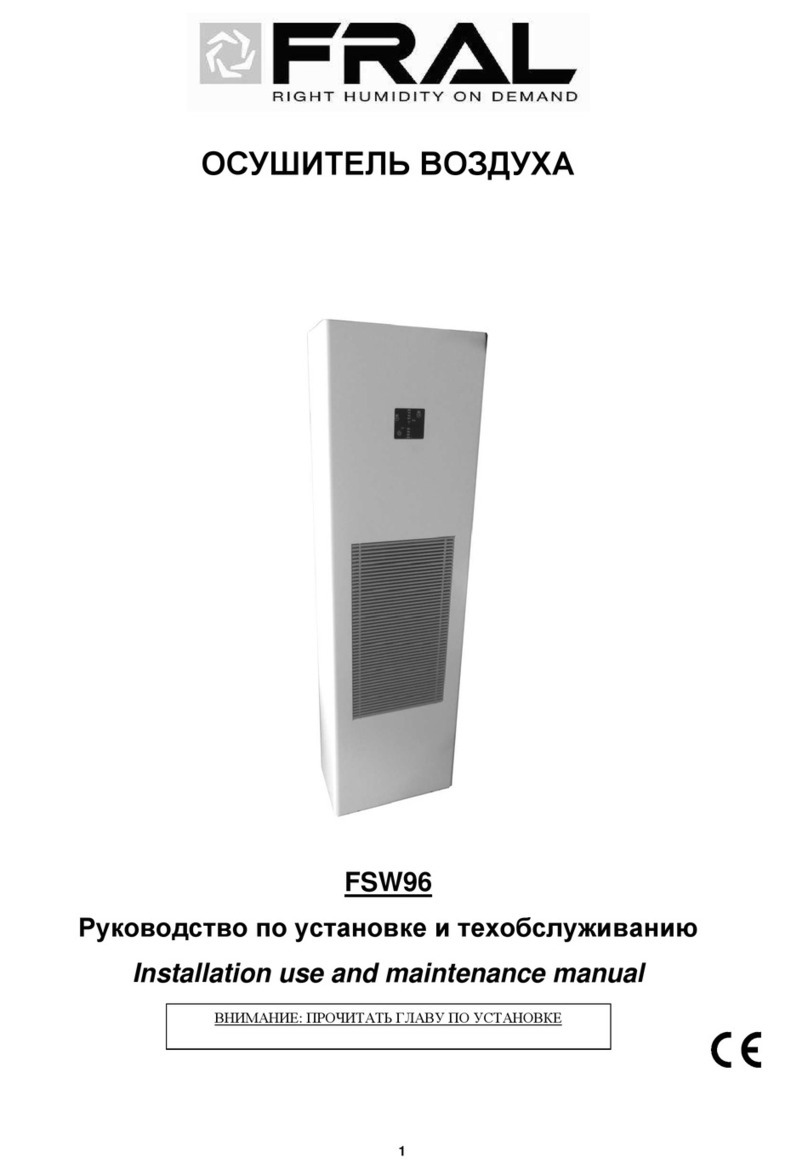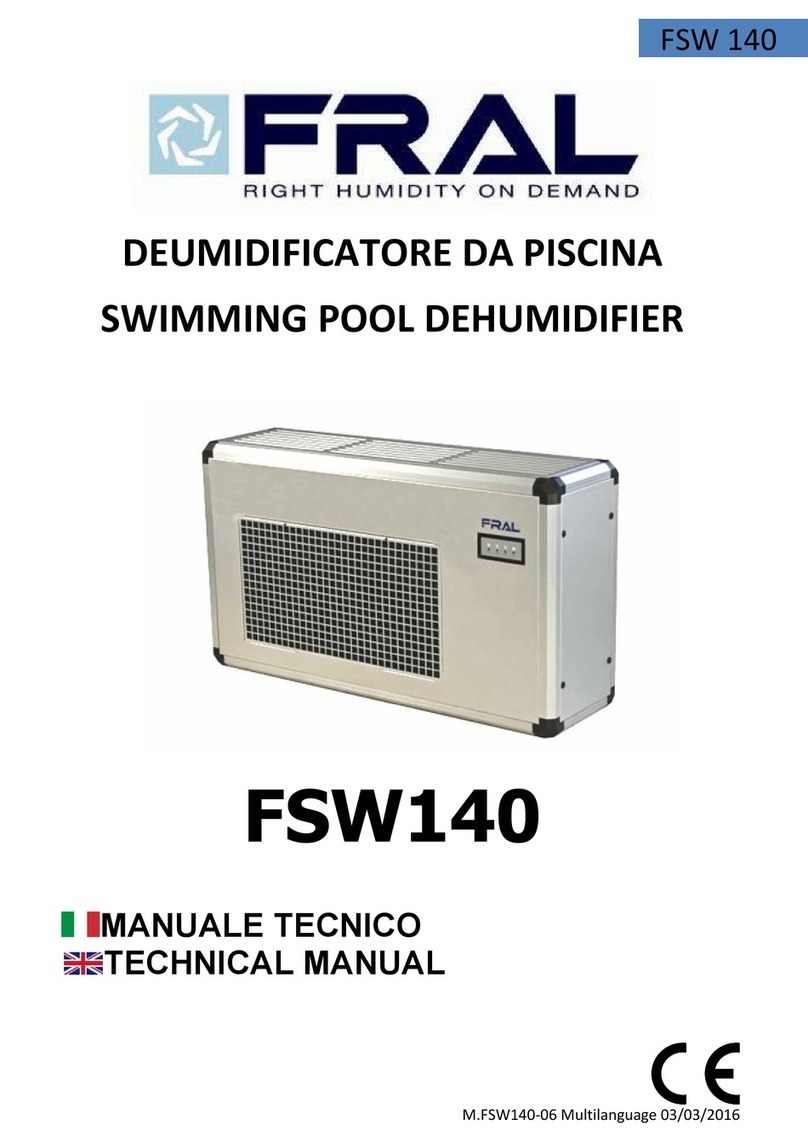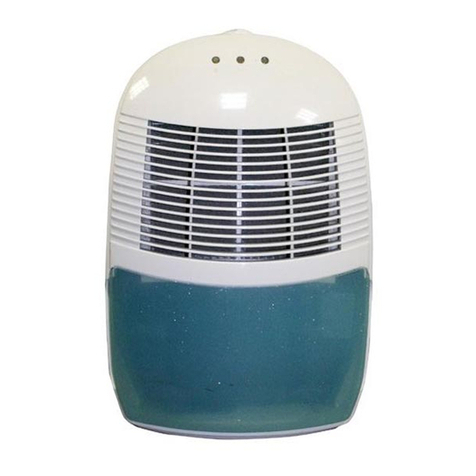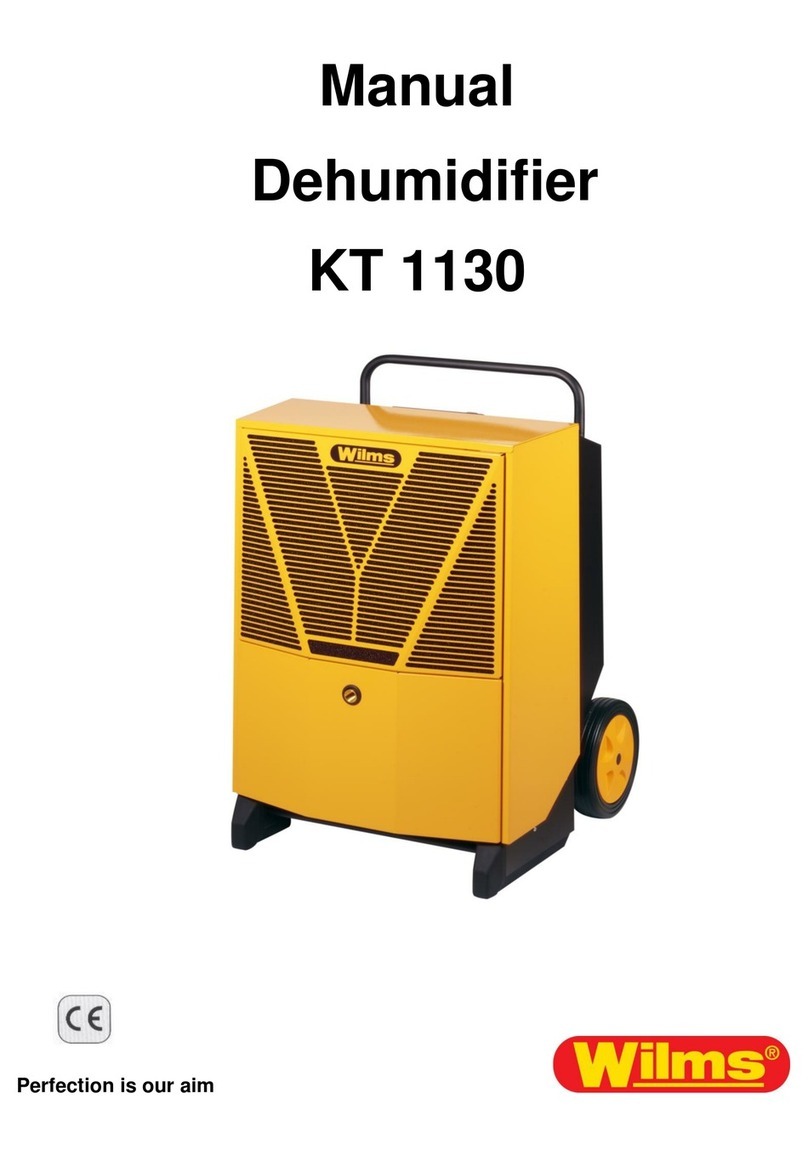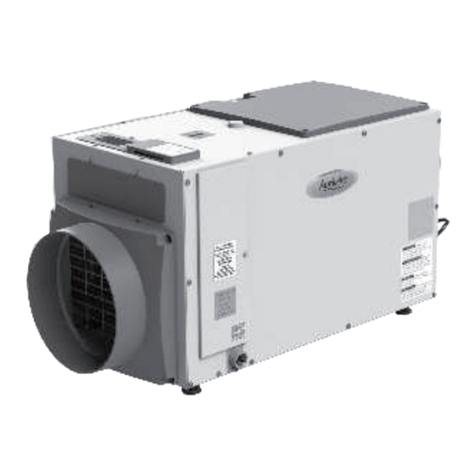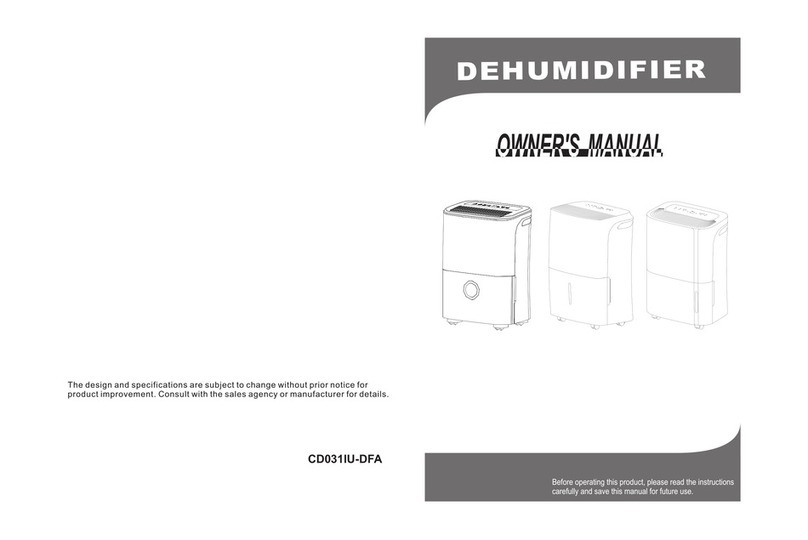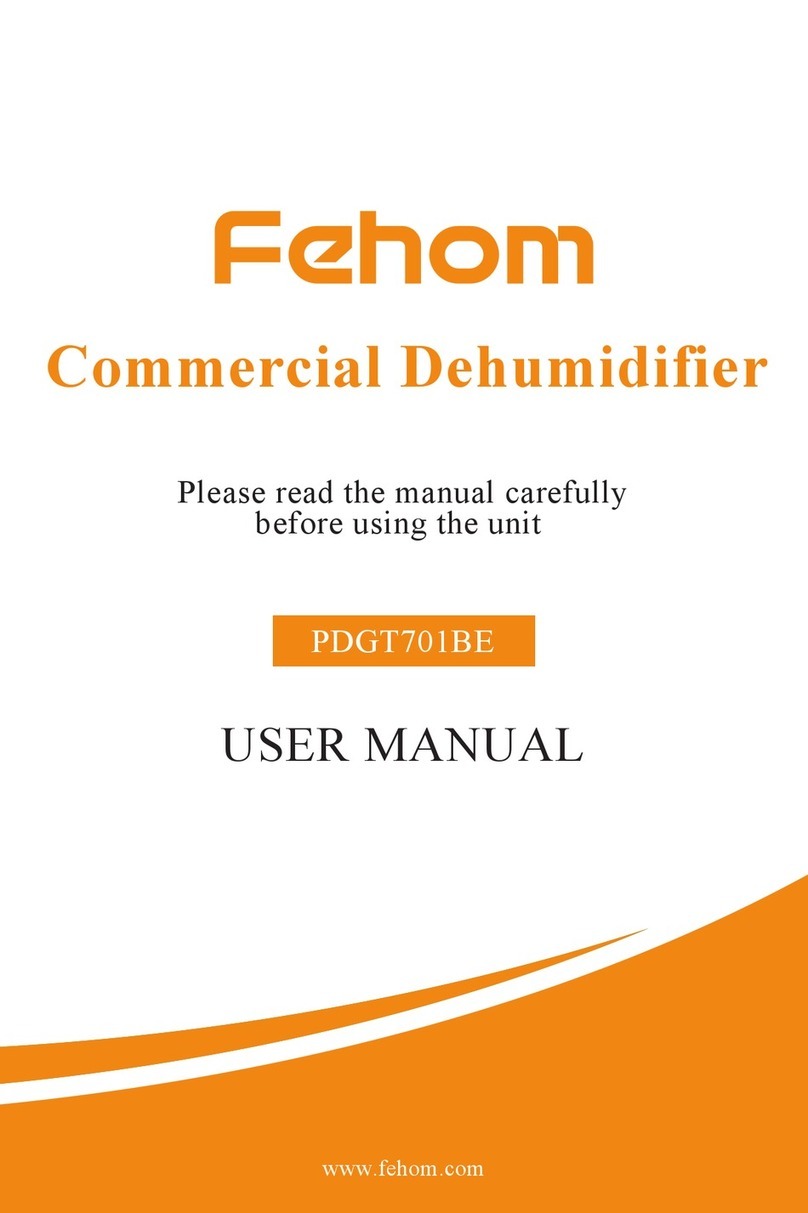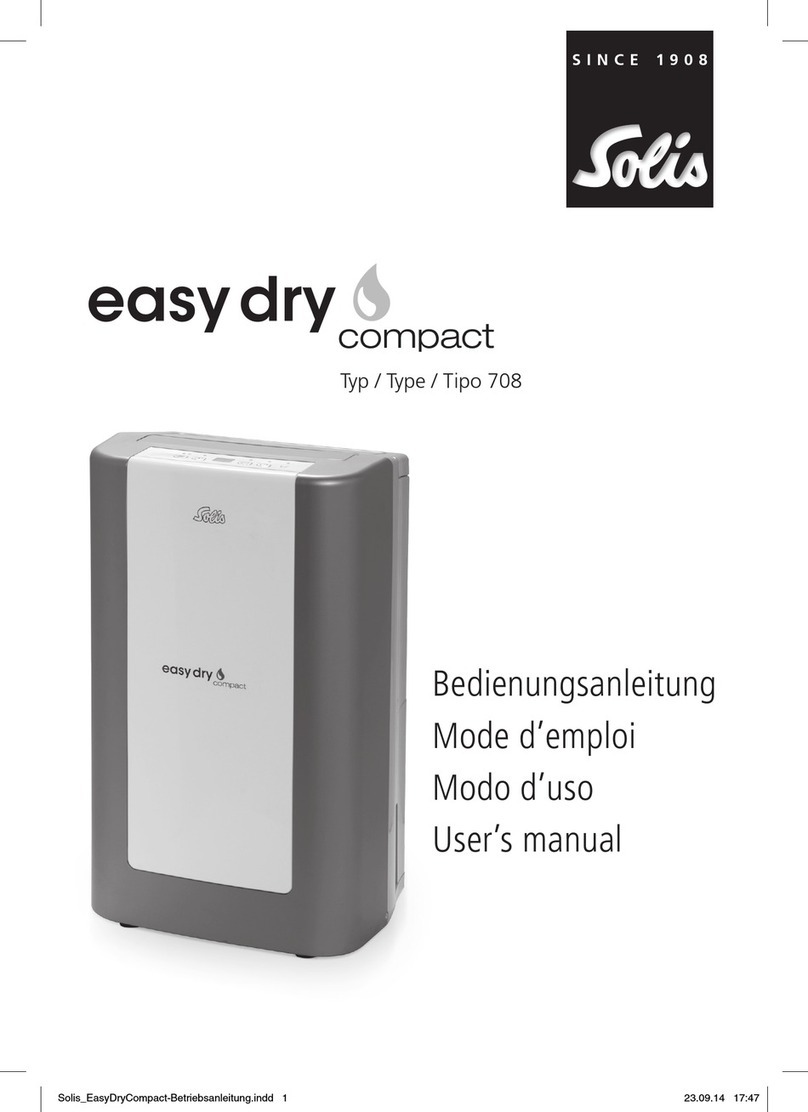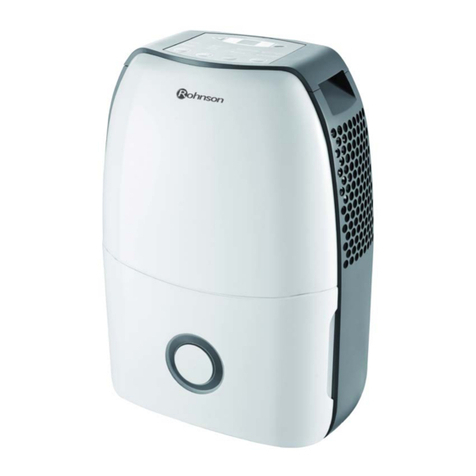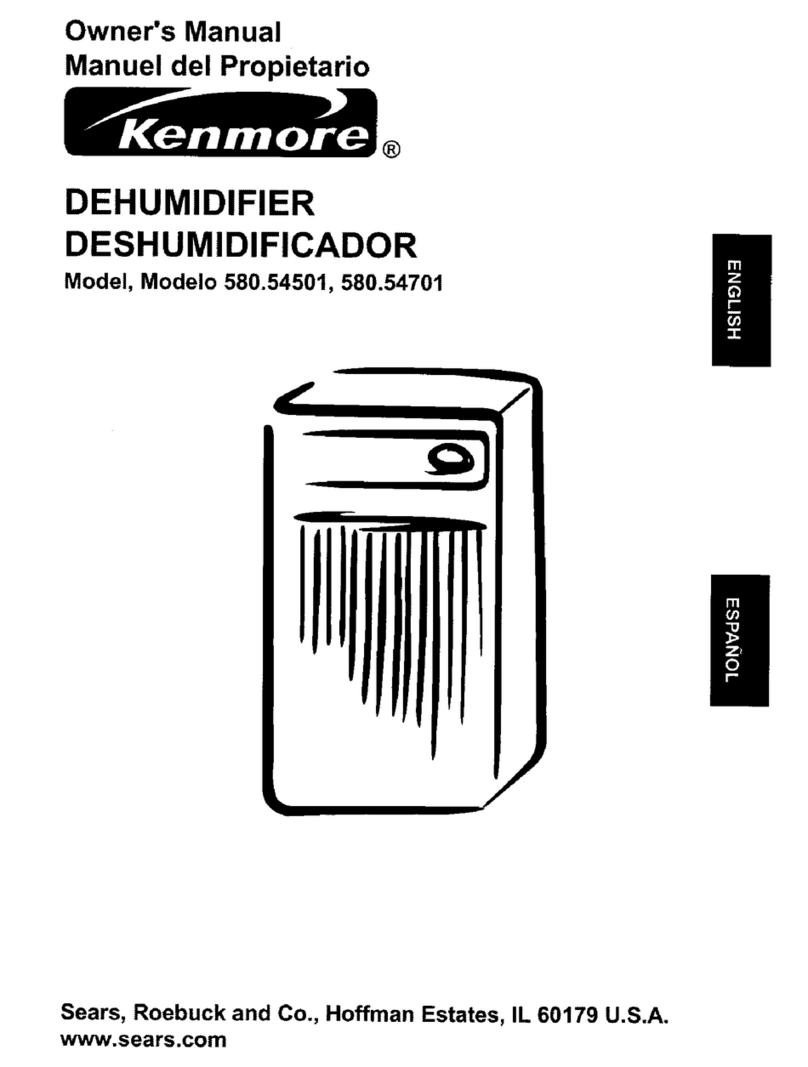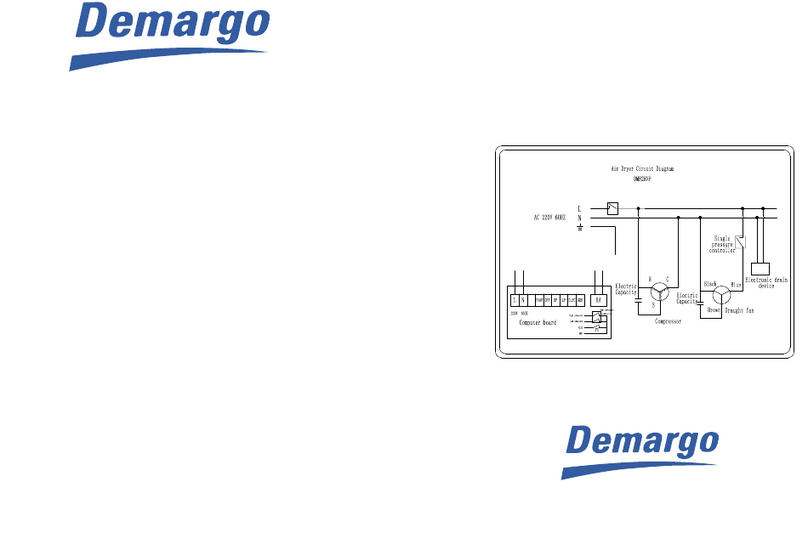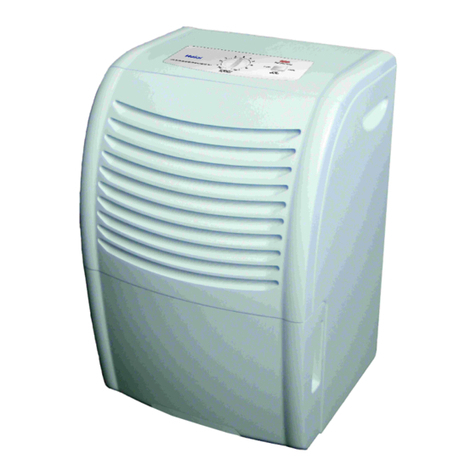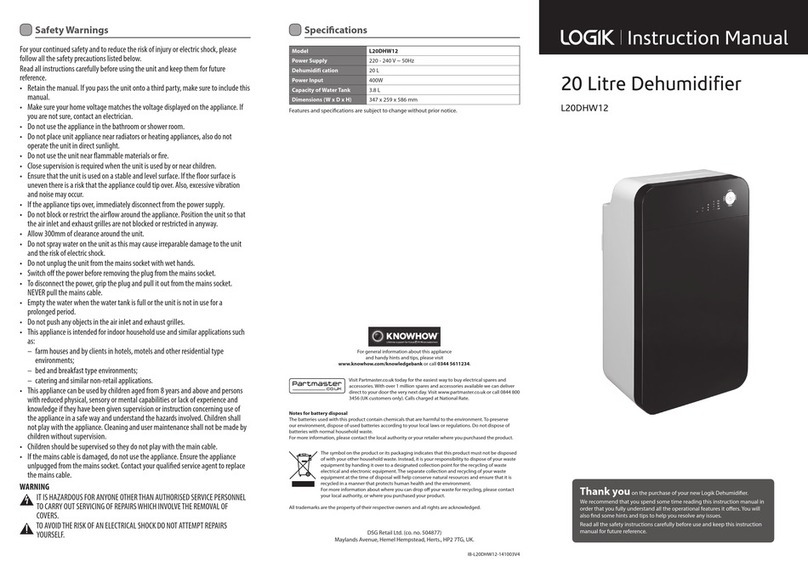6
FUNZIONAMENTO IN SOLA VENTILAZIONE
E’ possibile far funzionare la macchina in sola ventilazione.
Per attivare questa funzione collegarsi ai morsetti 4-6 (verificare lo schema elettrico) il contatto
deve essere in 230 VAC e almeno 2A. Se non c’è richiesta di
deumidificazione ma di sola ventilazione il ventilatore continuerà
a funzionare se il contatto tra i morsetti 4-6 è chiuso.
VELOCITA’ DEL VENTILATORE
In caso di necessità legate all’impianto di canalizzazione è possibile
ridurre la velocità del ventilatore spostando il filo arancione collegato
al morsetto 9 ( vedere lo schema elettrico ).
MORSETTO 9 →MASSIMA VELOCITA’ ( IMPOSTAZIONE DI FABBRICA )
MORSETTO 8 →MEDIA VELOCITA’
MORSETTO 7 →MINIMA VELOCITA’
PRIMO AVVIAMENTO
Per poter essere messo in funzione l’apparecchio deve essere rimasto in posizione orizzontale
corretta per almeno due ore. L’inosservanza di questa norma può causare un
danneggiamento irreparabile del compressore.
Trascorso il tempo appena citato, è possibile avviare il deumidificatore dando tensione. Se si
ha il consenso dell’ igrostato, si avvierà immediatamente il ventilatore e dopo circa 3.5 minuti
si avvierà il compressore. All’interno della scatola elettrica è alloggiata la scheda elettronica
che gestisce il ritardo all’avviamento del compressore ed il ciclo di sbrinamento.
Sulla scheda ci sono quattro luci. Durante il regolare funzionamento sono accese le due luci
rosse centrali. LED 1 alimentazione collegata e LED 2 deumidificazione. Durante la pausa
all’avviamento o, ciclicamente ogni 40 minuti circa per lo sbrinamento, si accende la terza luce
rossa. Se non si accende alcuna luce significa che la macchina non è alimentata. Se non sono
accese entrambe le luci centrali, ma una sola, significa che non ritorna il consenso dall’
igrostato. In caso di non avviamento verificare, in base a quanto appena descritto, la
correttezza dei collegamenti elettrici.
MANUTENZIONE PERIODICA
PULIZIA DEL FILTRO
L’unica manutenzione da eseguire periodicamente è la pulizia del filtro che va eseguita con
frequenza variabile a seconda della polverosità dell’ambiente e della quantità di ore al giorno
di effettivo funzionamento dell’apparecchio.
Orientativamente per un uso normale la pulizia è sufficiente una volta al mese. Per un impiego
in ambienti polverosi si può rendere necessaria una frequenza anche più che doppia.
